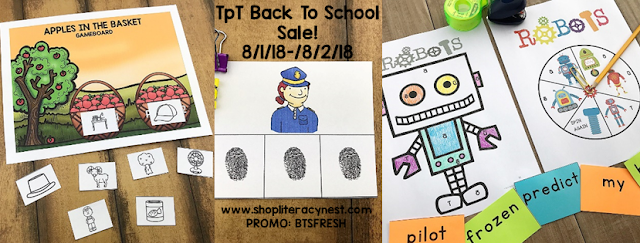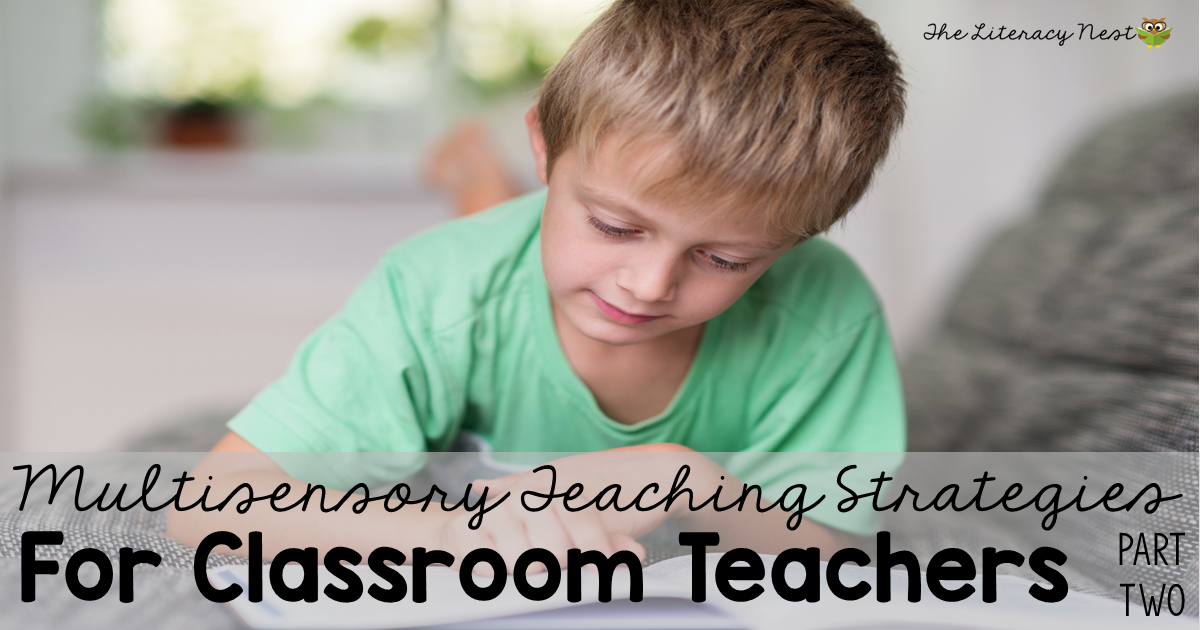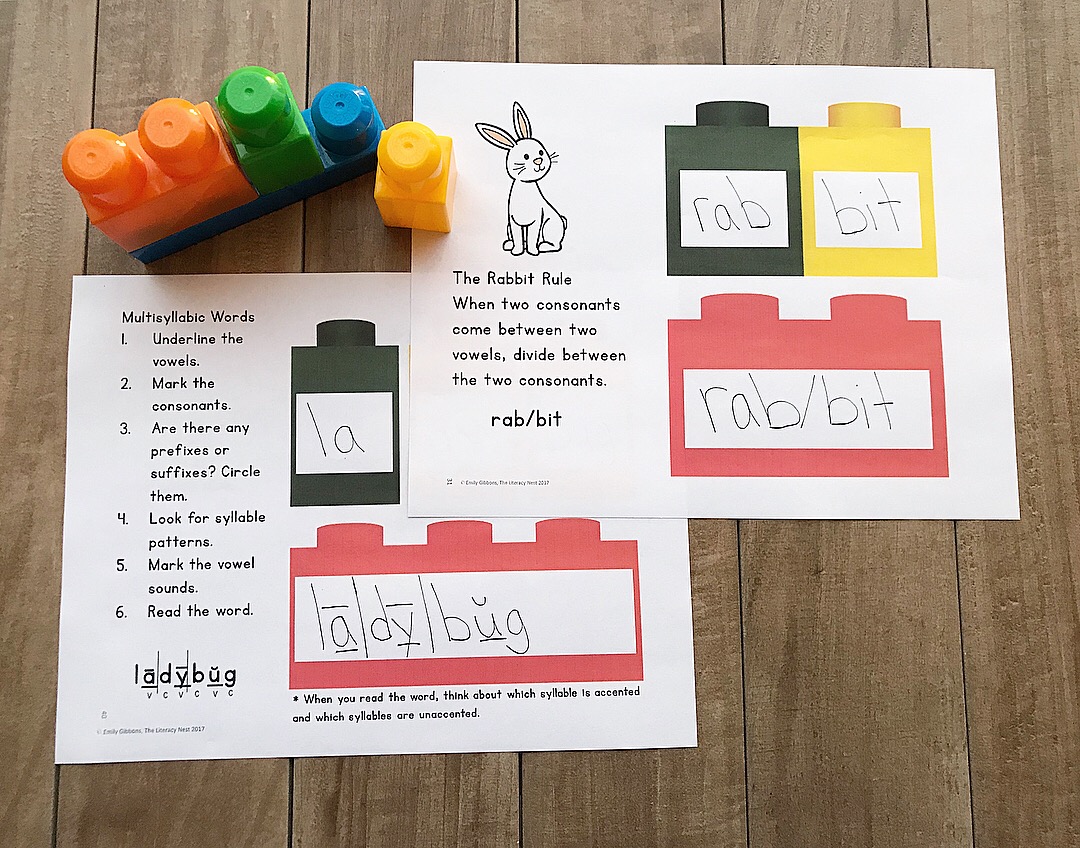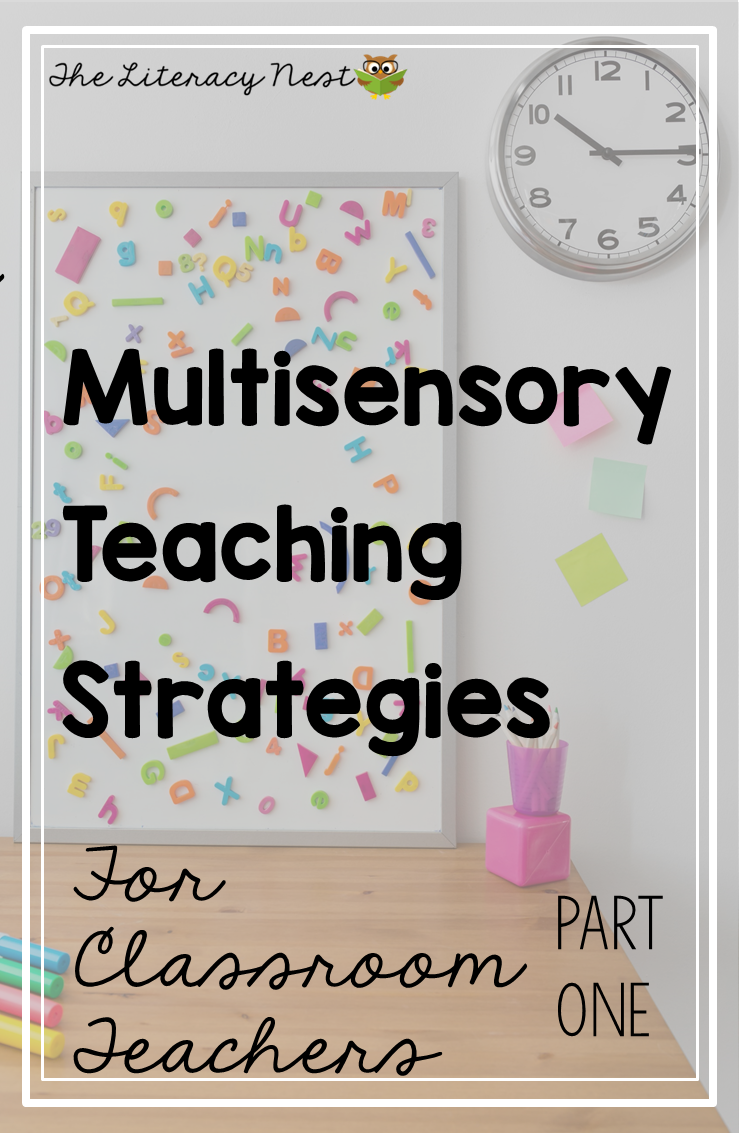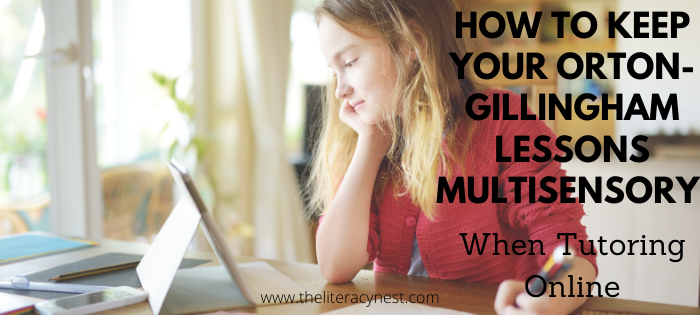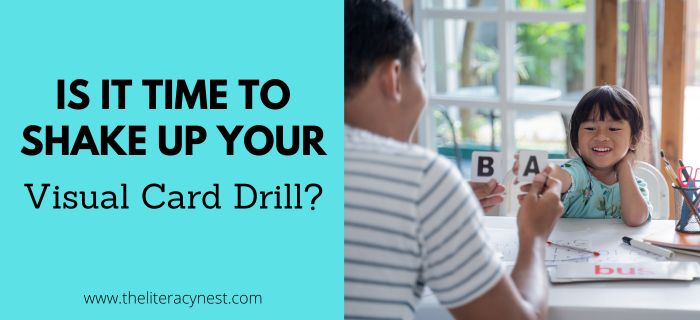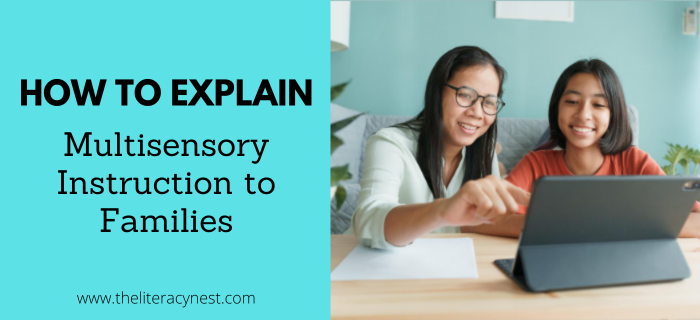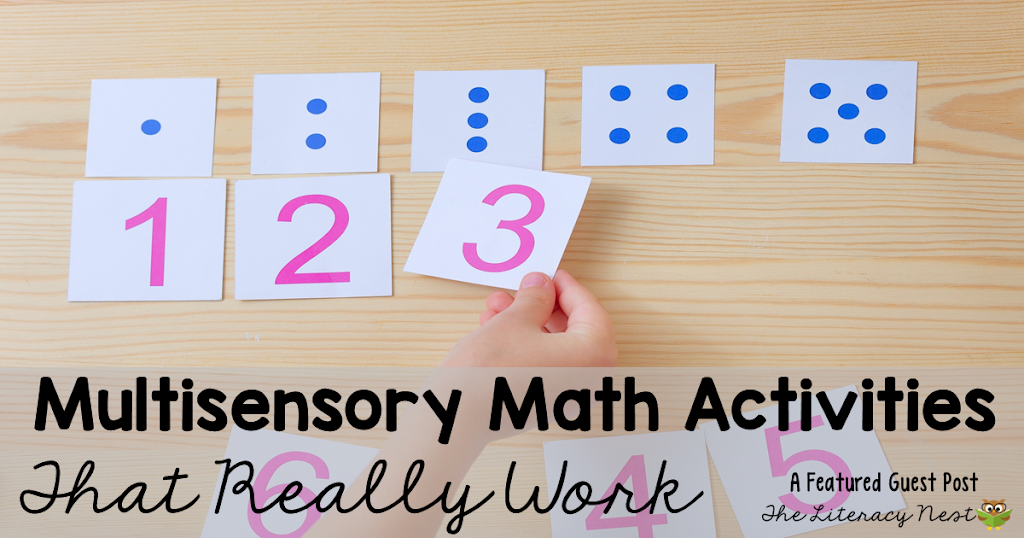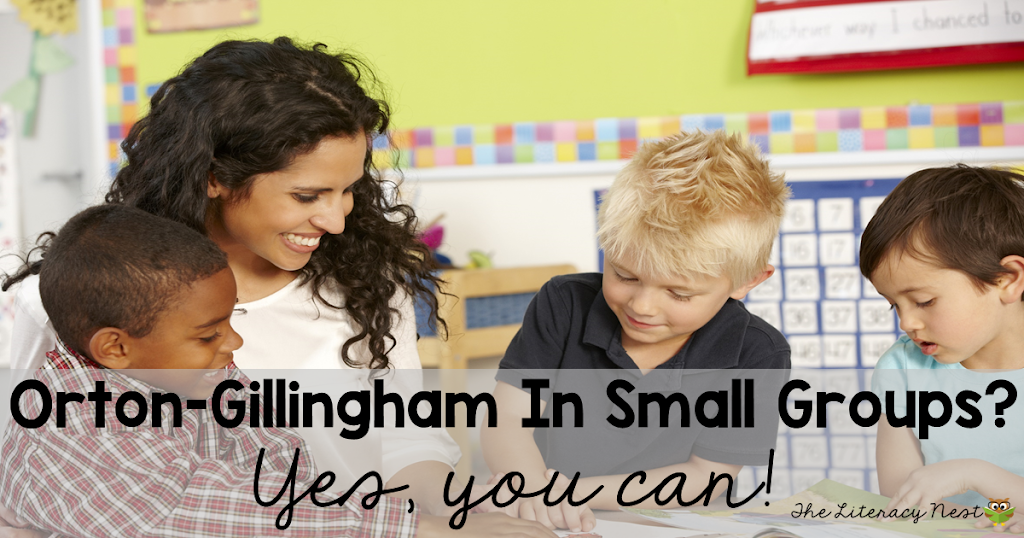Share:
Using Multisensory Teaching Techniques
Multisensory learning strategies are crucial not just for kids with dyslexia, or within
Orton-Gillingham lesson plans, it is good solid teaching for ALL students. Incorporating multisensory learning tools into your classroom lessons will not replace intervention services, but it will make classroom lessons more accessible to students with learning differences.
As you know, multisensory teaching techniques are valuable not only for students who struggle with reading and writing skills, but for all students. Using a variety of senses helps with memory and retrieval and allows a student to support their areas of weakness with their areas of strength. Summer is a great time to refresh your teaching, learn new skills and plan a different way of doing things for the next school year. Hopefully, that way will be multisensory.
Here are even more ways to incorporate multisensory learning strategies into your school day.
Use of whole body movements, whole arm movements and hand signals to prompt everything from handwriting and spelling to phonemes, vocabulary and concepts. Getting a child’s whole body moving, whether they are hop scotching the syllables in a word or using a particular gesture to remember a tricky vowel sound is one of the best ways to solidify new learning. A bonus is that for students that may have difficulty attending or get particularly wiggly, this sort of activity that gets them up and moving can keep them engaged and learning for longer periods of time.
Have a listening center where students use audio text and follow along. A listening center is great for struggling readers for several reasons. They are able to enjoy and experience stories that may not otherwise be accessible to them. They have a fluent model reading to help them develop a sense of what reading should sound like. While audiobooks alone are great, using the text to follow along is even better. Adding that visual component gets the ears and eyes working together and trains the eyes to move at a fluent speed through the text.
Use visuals for reminders. Many children with dyslexia also have some sort of memory challenges. Whether the issue is working memory or word retrieval, having visual prompts available either on bulletin boards or in a personal reference notebook is incredibly helpful for helping students access and utilize their knowledge.
Use manipulatives to break apart sounds in words or syllables. There is no end to creative ideas for ways to break apart sounds or syllables in words. Often, a classroom teacher need look no farther than the math manipulative shelf. Unifix cubes, colored counters, counting bears, links and more can all be useful. Masking tape or dry erase tape can allow you to add letters or words to the manipulatives. A student favorite is to pull in the occasional candy corn or M&M manipulative for special occasions.
Teach students to pay attention to mouth position for sound distinction through the use of mirrors. In order for students to be able to accurately spell and read, they need to be able to discriminate between similar sounds. Teaching students about voiced and unvoiced pairs and about mouth position can be incredibly enlightening for many children. 3 simple words can help a child differentiate between the /f/ sound and the /th/ sound. “Watch my mouth.”
Make use of graphic organizers. Often people think only of challenges with spelling or reading, but for many children with dyslexia, written expression also provides a big challenge. Issues with organizing ideas, word retrieval and sometimes even letter formation combine in a perfect storm to make writing one of the least favored activities for many students with dyslexia. Use of graphic organizers, outlines and word banks will not only prove helpful to these students but may help boost the creativity of many of your more reluctant authors in training.
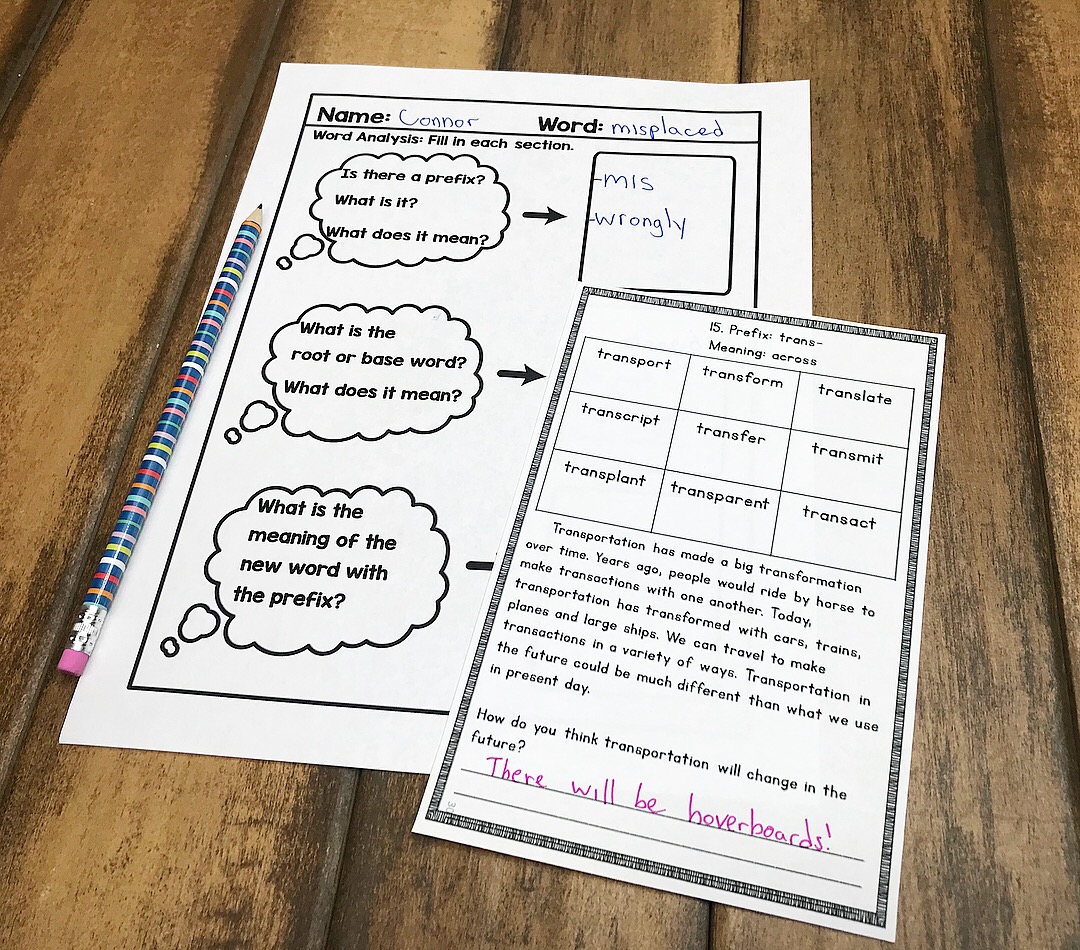 |
|
Use tracking tools like a finger, pointer, tongue depressor or bookmark. Some teachers are firm believers that children should only track with only their eyes as soon as possible. However, working with students with dyslexia has shown me that for students who are working so hard to orchestrate all the difference aspects of the reading task, with the challenges of language processing that dyslexia presents, using a finger to track can make the difference between accurate smooth reading and reading that is full of errors with little words, omissions and loss of fluency and comprehension. Even competent adult readers use a tracking finger when they are tired or reading something written in very small print or with complex technical language.
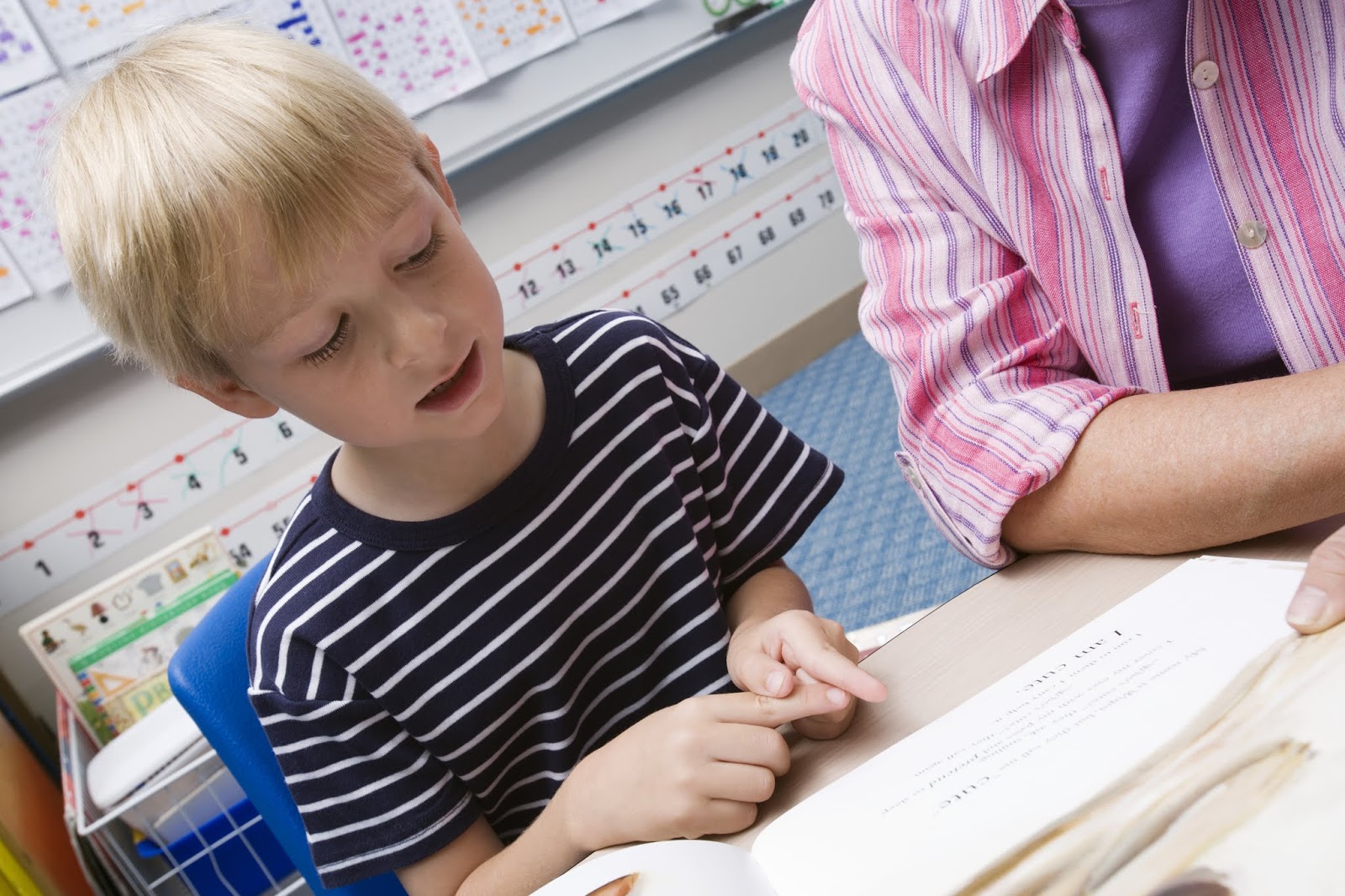
Practice discrimination tasks with visuals and words such as sorting. We want students to become proficient about discriminating between sounds in words and between similar sounds, but we also want students to become adept at discriminating different visual patterns such as prefixes, suffixes and syllable types. Sorting words by these visual characteristics or practicing rapid identification of visual patterns through fluency exercises is valuable practice.
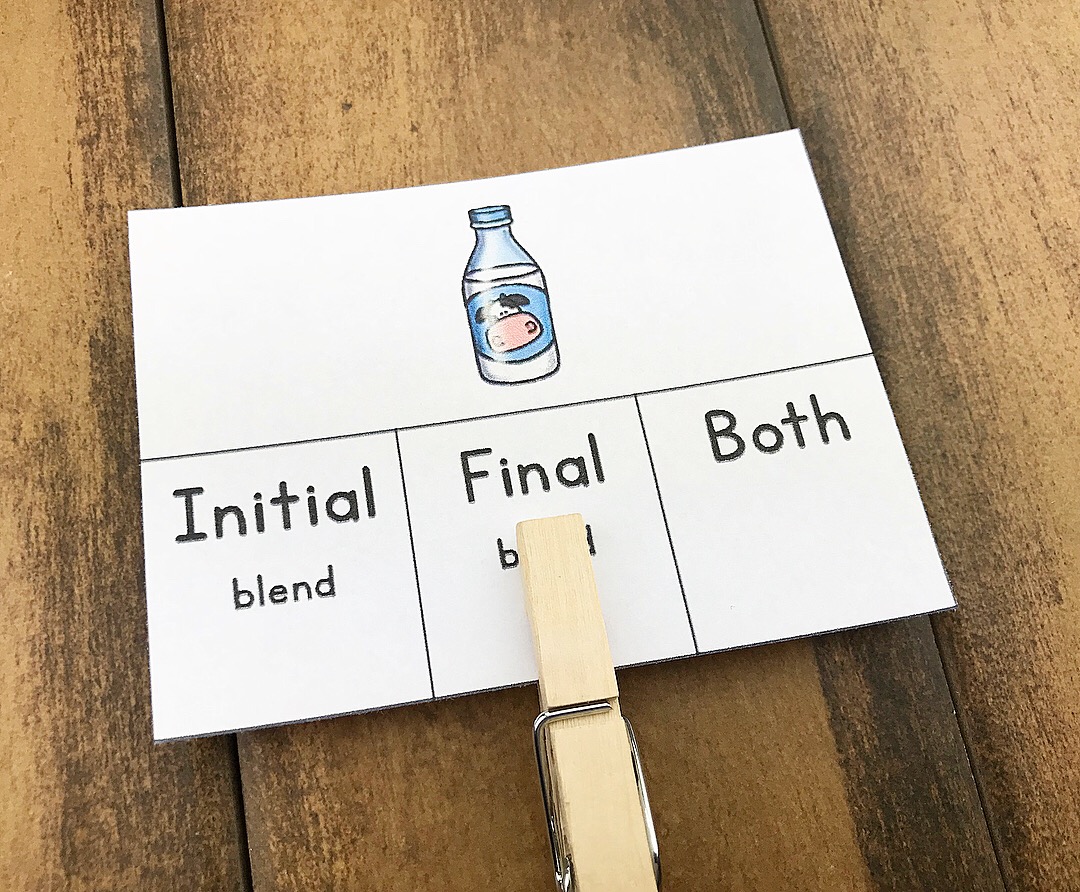

Utilize the trace, copy, eyes closed, check for practice with spelling words or learned words. A persistent difficulty for many early readers are high frequency words. When I suggest using this strategy for high frequency words, I am referring to the limited body of words that are not decodable by students in their early levels of skills instruction. Many of the words on school sight word lists are actually decodable. Concentrating our efforts on the smaller number that are NOT easily decoded makes this task less insurmountable for the student with learning challenges. Using the procedure of tracing the word, copying the word, writing the word with eyes closed and checking the word for accuracy builds muscle memory to help a student successfully read and write these words in other contexts.
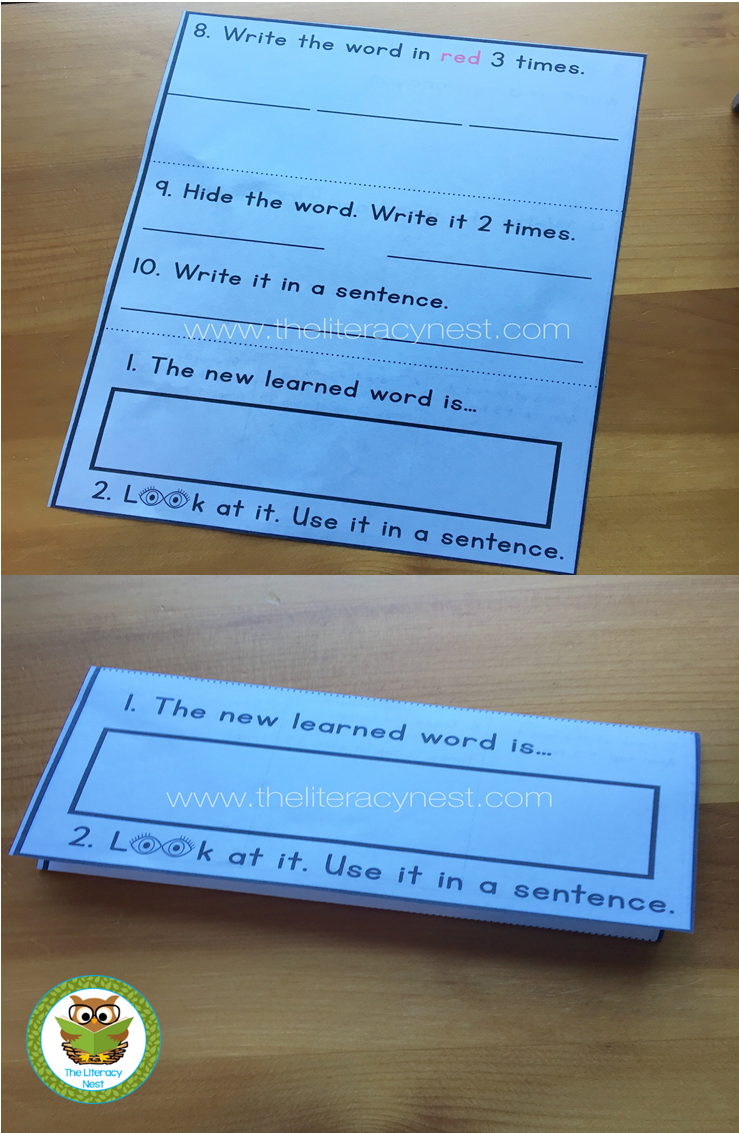
I hope looking at some ways to weave multisensory techniques into your lessons is inspiring to you and helpful to your students. While we concentrated on literacy in these two posts, multisensory techniques of using visual, auditory and kinesthetic modalities together can be applied to skills of numeracy as well as reading and writing. For students that struggle with mathematics, putting your creativity to work in the math domain may serve them very well.
 |
| THANKS FOR PINNING ME! 🙂 |
Do you receive my weekly emails? It’s easy to subscribe! Once you confirm your subscription, I will send you one email a week with tips, information about new blog posts or resources, sales and freebies! GO HERE to sign up for The Literacy Nest’s email list. 🙂
One more thing! Be sure to checkout the TpT Back to School Sitewide sale on 8/1/18-8/2/18! You can save 25% everything in my store with promo code BTSFRESH at checkout.
Share:


